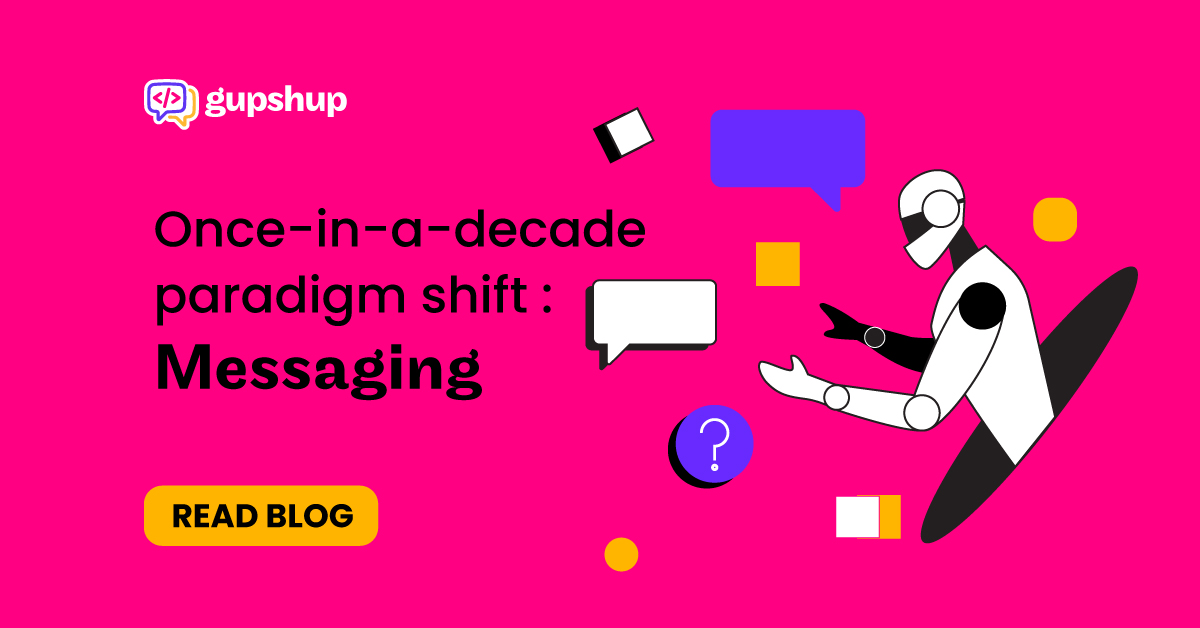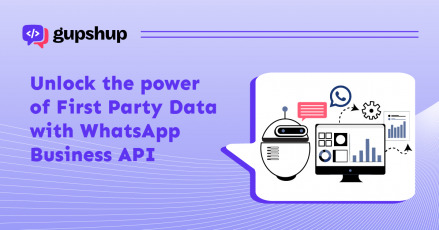Once-in-a-decade paradigm shift : Messaging

In the history of the personal computing industry, we have had a paradigm shift about once every decade.
In the 1980s, it all started with the personal computer — the platform was the desktop computer. Developers that wanted to add additional functionality created desktop client software. The gatekeepers off the platform were Microsoft and Apple. Major software applications included Lotus, Word, Excel and many others. A major developer ecosystem emerged around these platforms enabling users to personalize their computing experiences. Over time, however, this framework outlived its purpose. Software clients ended up with lots of features (bloatware), many of which were used by just a few users. The development costs were high partly because developers had to render the the native screens in the client. The cost of upgrades was high since it required additional user action, namely yet another download.
In the mid-90s, as network speeds improved, we shifted to another paradigm: the web. The browser was the new platform and the website was the new “client”. Developers built web sites to enable specific use cases. There were many advantages of the new approach. The cost of developing and upgrading websites is much lower than client software. The screens were rendered by the browser, with the website publishing just html. This approach eliminated the problem of bloatware — the software was all kept on the server side with each web page providing just-in-time software for only the features relevant to that page. Netscape owned the platform for a while until Microsoft saw it as an existential threat. Websites such as Yahoo, Amazon, Google etc. grew to success at this time.
In the mid-00s, with the rise of the smartphones, the dominant paradigm shifted yet again. The mobile OS became the new platform and developers built individual apps for specific use cases.
The small screen added mobility and enabled computers to reach many more billions of users than possible with the large screen. While we gained mobility, we took a step back with client-side software development approach. (To be fair, with mobile network speeds being slow in the early days of smartphones, the app approach clearly delivered more delightful user experiences than a server-side approach would have). The problems from an earlier era of client-side software development came right back with it. The cost of development and upgrade is high, and app bloatware is becoming a problem again. To add to that is the problem that it is hard to use numerous apps on the small screen — while there are millions of apps out there, most of us use no more than a dozen on a given day. We are apped out!
In the mid-10s, (predictably on schedule?) messaging is emerging as the new platform. Developers are building messaging bots to support specific use cases. Messaging bots have the same advantages of server-side development as websites. The cost of development and upgrade is lower than apps. The end-user experience is also better suited to the small screen, since users don’t have to switch across different apps. They can stay within the messaging app that they already love, accomplishing all tasks through messaging. Like the early days of any major disruption, industry players and developers are jockeying to peer into the future and identify areas where they can add value. Like the earlier shifts, this, too, will create opportunities for new players and threats for current leaders.
Say hello to another major wave of creative destruction!



